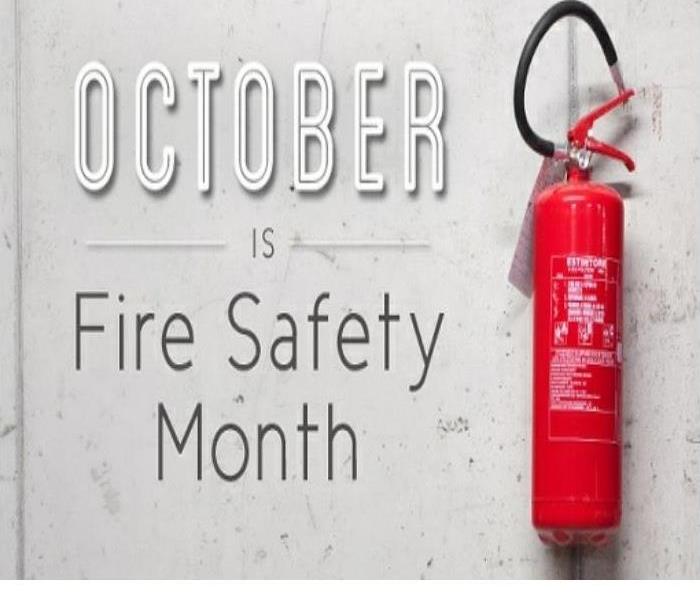October is Fire Prevention Month
9/26/2017 (Permalink)
Home Safety Checklist
Smoke Alarms
? There is one smoke alarm on every level of the home and inside and outside each sleeping area.
? Smoke alarms are tested and cleaned monthly.
? Smoke alarm batteries are changed as needed.
? Smoke alarms are less than 10 years old.
Cooking Safety
? Cooking area is free from items that can catch fire.
? Kitchen stove hood is clean and vented to the outside.
? Pots are not left unattended on the stove.
Electrical & Appliance Safety
? Electrical cords do not run under rugs.
? Electrical cords are not frayed or cracked.
? Circuit-protected, multi-prong adapters are used for additional outlets.
? Large and small appliances are plugged directly into wall outlets.
? Clothes dryer lint filter and venting system are clean.
Candle Safety
? Candles are in sturdy fire-proof containers that won’t be tipped over.
? All candles are extinguished before going to bed or leaving the room.
? Children and pets are never left unattended with candles.
Carbon Monoxide Alarms
Carbon monoxide alarms are located on each level of the home.
? Carbon monoxide alarms are less than 7 years old.
Smoking Safety
Family members who smoke only buy fire-safe cigarettes and smoke outside.
? Matches and lighters are secured out of children’s sight.
? Ashtrays are large, deep and kept away from items that can catch fire.
? Ashtrays are emptied into a container that will not burn.
Heating Safety
? Chimney and furnace are cleaned and inspected yearly.
? Furniture and other items that can catch fire are at least 3 feet from fireplaces, wall heaters, baseboards, and space heaters.
? Fireplace and barbecue ashes are placed outdoors in a covered metal container at least 3 feet from anything that can catch fire.
? Extension cords are never used with space heaters.
? Heaters are approved by a national testing laboratory and have tip-over shut-off function.
Home Escape Plan
? Have two ways out of each room.
? Know to crawl low to the floor when escaping to avoid toxic smoke.
? Know that once you’re out, stay out.
? Know where to meet after the escape.
? Meeting place should be near the front of your home, so firefighters know you are out.
? Practice your fire escape plan.






 24/7 Emergency Service
24/7 Emergency Service
